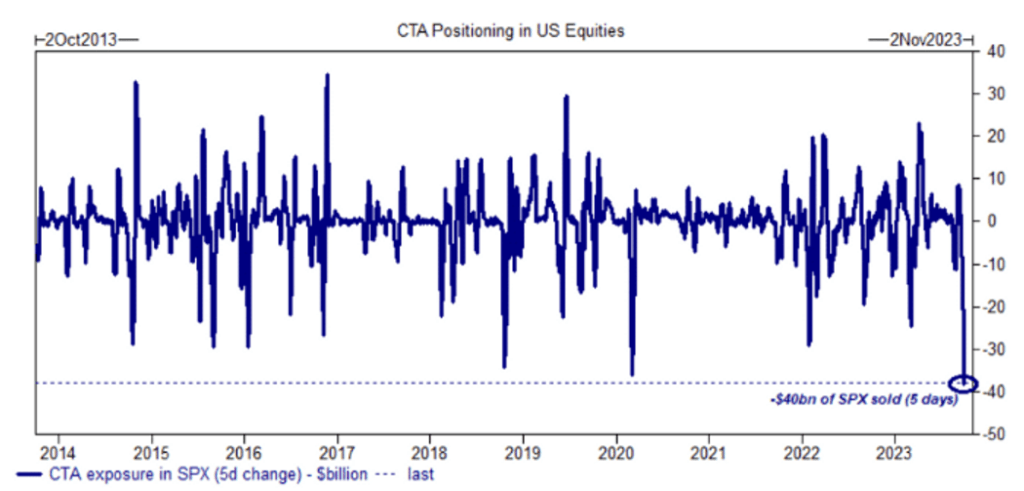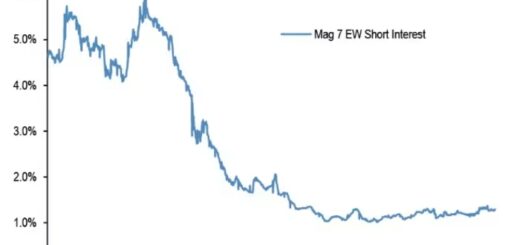U.S. Stock Market Watch: The Effect of Trend-Following Fund Adjustments
Adding to the array of challenges facing the U.S. stock market, a new concern emerges: systematic trend-following funds are reducing their market exposure, potentially exacerbating downward pressure on the markets in the upcoming weeks.
Goldman analysts estimate that commodity trading advisors (CTAs), a subset of trend-following hedge funds typically engaged in futures markets, shed approximately $40 billion worth of exposure to U.S. stocks last week. This rapid pace of CTA selling, according to Goldman’s data, sets a record.

Fortunately, the Goldman team anticipates that the selling pressure from systematic funds will diminish in the coming days. However, not everyone shares this optimistic outlook. A team at UBS, in a recent note obtained by MarketWatch, forecasts an additional $20 billion to $30 billion in CTA selling over the next two weeks. According to their analysis, this would result in systematic funds holding a net short position on stocks for the first time since November of the previous year.
The S&P 500 faced a 3.6% decline in the quarter ending in September, marking its first quarterly downturn in a year. Since then, stocks have continued to slide, with the index decreasing by another 0.5% since the beginning of October. In total, the S&P 500 has experienced a nearly 7.5% drop since its peak on July 31. By comparison, the index closed at 4,263.75 on Wednesday following a 0.8% increase, marking its most significant daily gain in three weeks, according to FactSet data.
On the flip side, the Nasdaq Composite saw a 1.4% rise on Wednesday, closing at 13,236.01, while the Dow Jones Industrial Average climbed 127.17 points, or 0.4%, reaching 33,129.55. Easing Treasury yields were seen as a potential factor in this uptick, offering stocks a temporary respite.
Increasing yields on Treasury bonds, particularly for longer-dated maturities, have exerted pressure on stocks, with the yields on the 10-year and 30-year Treasury bonds reaching their highest levels in 16 years earlier this week. Rising bond yields can lead to higher borrowing costs for corporations, potentially impacting economic growth, while also diminishing the appeal of U.S. equity valuations compared to bonds.
For instance, these rising yields have recently driven the U.S. equity risk premium to its lowest level in over two decades, hovering just under 0.90 earlier this week, as per Dow Jones Market Data. This indicates that the compensation investors can expect for holding stocks rather than bonds is currently less attractive, at least in theory.
Investors have also pointed to the lofty valuations of mega-cap technology stocks and concerns about the Federal Reserve’s plan for higher interest rates as contributing factors to the ongoing market selloff.




